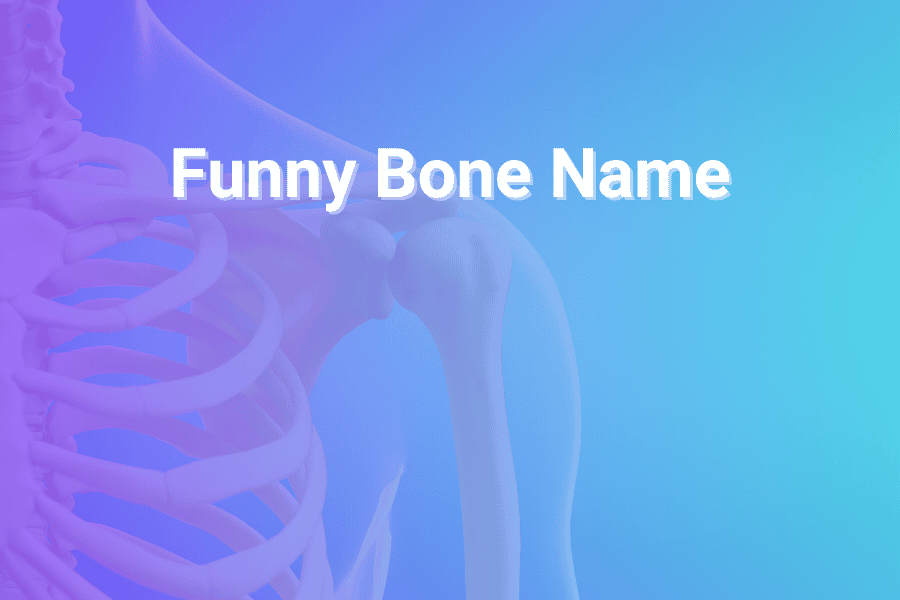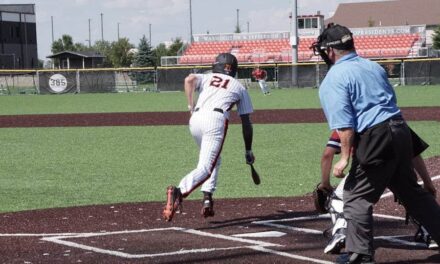The phrase “funny bone” shows up in school hallways, sports fields, and office break rooms. People use it for a quick laugh, but the name hides a real nerve with a real job.
You don’t hit a bone. You bump the ulnar nerve as it passes behind the inner elbow. That quick zap feels odd, sharp, and a little hilarious after it fades.
In this article, you’ll learn why we call it the funny bone, what the ulnar nerve actually does, how to protect it, when symptoms matter, and what treatment looks like for Americans who type, text, throw, and work with their hands.
What The “Funny Bone” Name Really Means
The “funny bone” is a nickname, not an anatomy term. When you smack the inside-back of your elbow and feel that shock, you hit the ulnar nerve in a shallow groove. The sensation feels weird—funny in a not-so-fun way. Some people also point to a wordplay twist: the upper-arm bone is the humerus, which sounds like “humorous.” The two ideas stuck to each other, and the phrase survived because it fits the experience. The name helps kids and adults remember the spot, even if it misleads them about what they actually hit.
The Real Star: Your Ulnar Nerve
Your ulnar nerve carries both motor and sensory signals. It starts from nerve roots in your neck, runs down the arm, and swings behind the elbow at a bony bump called the medial epicondyle. That spot puts the nerve close to the surface. You can even feel it roll if you press gently while flexing the elbow.
From there, the nerve travels into your forearm, then into the hand through a narrow tunnel near the wrist. In the hand it branches to power most small muscles that control fine finger movements and spread or pinch the fingers. It also carries sensation from the little finger and the ulnar (inner) side of the ring finger, along with part of the hand’s edge.
Why A Light Bump Feels Like An Electric Jolt
The groove behind the medial epicondyle doesn’t protect the nerve much. The skin lies thin, and there’s not much padding. When your elbow hits a chair arm, door frame, or desk corner, the nerve compresses against bone. Nerves hate abrupt pressure.
They fire irregularly and send a mix of signals your brain reads as pins-and-needles, burning, or a buzzing shock. Because the ulnar nerve feeds the ring and little fingers, the odd feeling often shoots there. You might shake your arm or rub the spot. Most zaps fade in seconds because the nerve rebounds once the pressure lifts.
U.S. Habits That Keep The “Funny Bone” Busy
Everyday American routines put the ulnar nerve under repeat stress. We bend elbows for long stretches while holding a phone, streaming shows, or commuting. About nine in ten U.S. adults now carry a smartphone, and many spend several hours each day on mobile screens. Long elbow flexion narrows the nerve’s tunnel and increases pressure. Office work adds keyboard time, desk leaning, and chair-arm pressure. Trades and sports layer on tools, grips, throws, and vibrations. None of this guarantees problems, but the mix explains why tingling along the ring and little fingers shows up so often in clinics.
From A Quick Zap To A Real Condition
A single bump gives you a laugh and a wince. Repeated pressure and long bends can add up and irritate the nerve. Doctors call that cubital tunnel syndrome. The pattern looks familiar: tingling and numbness in the ring and little fingers, night-time symptoms when you sleep with bent elbows, and grip weakness that shows up in jar lids, key turns, or typing accuracy.
In a busy workweek the symptoms may flare, then settle on days off. Left alone and pushed by habit, the nerve can weaken more. You might notice finger coordination problems or early “clawing” at the ring and little fingers because the small muscles lose power.
Why Kids, Teens, And Adults Feel It Differently
Kids sprint, climb, and collide. They also rest elbows on desks and hunch over tablets. The nerve still sits in the same groove, so the zap shows up the same way. In growing arms, the elbow region also sees common injuries from falls or sports, which can momentarily irritate the nerve.
Teens stack screen time and sports, so they get both phone flexion and practice throws. Adults layer in desk work, tools, or weight training. Across ages, the fix often starts the same: change habits that hold the elbow in deep bends and stop leaning on the inner elbow.
Myths That Deserve A Quick Reality Check
“Funny bone” sounds innocent, so myths stick. Three quick clarifications help:
• You didn’t hit a bone. You hit the ulnar nerve where it sits close to the skin.
• Massaging the groove after a big whack won’t speed recovery. Gentle movement helps, but time and reduced pressure help more.
• Numbness in the ring and little fingers doesn’t always come from the elbow. The same nerve can get squeezed at the wrist in Guyon’s canal or higher up near the neck. Location matters.
Simple Changes That Protect Your Ulnar Nerve
You don’t need a full lifestyle overhaul. Small moves reduce pressure a lot:
• Keep elbows less than fully bent during long calls or streams. Use a headset or prop the phone higher and farther from your face.
• Avoid leaning your inner elbow on the desk edge or chair arms. Add a soft pad or shift your posture.
• Set keyboard and mouse height so your elbows sit near 90 degrees and your wrists stay straight.
• At night, try a light wrap or a soft towel around the elbow to discourage deep bending. Many people notice calmer mornings within a few weeks.
• Mix tasks. Alternate typing, standing, and short walks to break long flexion blocks.
Sports, Training, And The “Funny Bone”
Throwing sports stress the inner elbow, especially during the late cocking and acceleration phases. Pitchers, quarterbacks, javelin throwers, and even weekend softball players feel it. The ulnar nerve can slide or snap over the epicondyle in some athletes, which irritates it with each throw. Strength coaches now build in forearm and shoulder conditioning and limit pitch counts in youth leagues to protect the inner elbow structures. In the gym, strict form on triceps dips, skull crushers, and deep push-ups reduces elbow strain. Athletes who feel recurrent tingling should adjust volume, check mechanics, and add recovery days.
Work And Tool Use
Trade workers grip, hammer, drill, and rotate the forearm for hours. Vibration and tight grips fatigue the small hand muscles and load the nerve. Simple swaps help. Use padded gloves when possible, rotate tasks between crew members, and pick tools with ergonomic handles. On job sites and in warehouses, plan short micro-breaks. Ten to twenty seconds to shake out the hands and straighten the elbows makes a difference over a full shift.
When To See A Clinician
A one-off zap doesn’t need an appointment. Set one if numbness lingers for more than a few days, if tingling returns daily, or if you notice grip weakness or finger clumsiness. See someone sooner if you struggle with buttoning, key turns, or pinch strength. Night pain that wakes you up for weeks also deserves a check. Early care keeps options broad and outcomes better.
How Clinicians Confirm The Problem
A good exam wins most of the time. A clinician maps your numbness pattern, checks sensation with light touch, tests finger spread and pinch, and looks for muscle shrinkage along the hand’s inner edge. They may tap the nerve at the elbow to see if it reproduces tingling.
If the picture still needs clarity, nerve conduction studies and electromyography can measure signal speed and muscle response. These tests also help separate elbow-level compression from wrist-level issues and neck causes.
First-Line Treatment You Can Start Today
Conservative care solves many elbow-level nerve irritations. You straighten the elbow more often, stop leaning on the inner elbow, and add a soft night wrap to limit deep flexion. You adjust your desk and chair height so your forearms rest level with the keyboard. You move the mouse closer so your elbow doesn’t drift forward and bend more.
A short course of anti-inflammatory medication may help if your clinician okays it. Some people benefit from a structured nerve-gliding routine taught by a hand therapist. These slow, controlled movements encourage the nerve to move smoothly through its tunnel without extra pressure.
When Braces And Therapy Aren’t Enough
If numbness persists or weakness progresses despite several weeks to a few months of careful changes, your clinician may discuss procedures. The most common option is cubital tunnel release. A surgeon opens the tight band that narrows the nerve’s space at the elbow. In some cases they also move the nerve slightly to a more protected spot in front of the elbow (anterior transposition) or remove a tiny portion of the bony bump if it crowds the nerve.
Most people recover hand function and lose the night tingling when they tackle the problem before severe muscle loss. Return-to-desk timelines often look reasonable, while heavy labor and overhead sports take more planning and rehab time.
Why The “Funny Bone” Feels Different From Other Nerve Zaps
Location and job make the difference. The ulnar nerve sits where bone and skin meet with minimal padding. It also feeds the small, precise hand muscles. When it protests, you feel both sensory weirdness and subtle dexterity changes.
That mix sets it apart from the median nerve at the wrist, which causes thumb-index-middle finger tingling and classic nighttime numbness, and from the radial nerve on the outer forearm, which affects wrist extension and the back of the hand. Knowing the pattern helps you explain symptoms clearly and gets you to the right fix faster.
Everyday Scenarios And Quick Fixes
You rest your elbow on the car door during a long drive. Your ring finger tingles. Slide your arm off the edge and straighten the elbow. You watch a three-hour game with your phone at chin level. Halfway through the fourth quarter, your little finger buzzes.
Lower the phone, loosen your grip, and rest your elbow at your side. You crush emails with your elbows bent past 100 degrees. Bring the keyboard closer, raise the chair, and back the elbows off the desk edge. These tiny course corrections stack up. You feel fewer zaps and keep the nerve calm over weeks.
A Quick Word On Wrist-Level “Funny Bone” Symptoms
Sometimes the elbow sits innocent. The ulnar nerve can get squeezed at the wrist in Guyon’s canal, often from bike handlebars, power tools, or cane handles. The tingling still hits the little and ring fingers, but the back of the hand often feels normal because a higher branch already left the main nerve before the wrist. Hand weakness may show up more with pinch or small finger movements. The fix shifts to handle padding, glove changes, and position adjustments. Cyclists know this well. They rotate hand positions and add cushioned bar tape to keep the nerve happy.
Parents, Coaches, And Managers: How To Help
Parents can set kids up with desk setups that fit their size and encourage tablet stands over lap hunching. Coaches can monitor throwing volume and teach mechanics that reduce inner-elbow stress. Managers can green-light small desk changes, headset use for long calls, and tool rotation. These small policy choices pay off in fewer complaints and steadier performance.
Bottom Line: A Misnamed Spot, A Very Real Nerve
The “funny bone name” sticks because it captures the moment—a sting that makes you laugh and wince. The science points to a simple truth. You have a hardworking nerve that skims a bony corner with little protection. Quick hits cause sparks.
Long bends and pressure can create real problems. You control a lot of the risk. Straighten the elbow more often. Stop leaning on the groove. Pad sharp desk edges. Seek help if numbness hangs around or weakness shows up. With a few smart tweaks, you keep the zaps rare and your grip strong.










